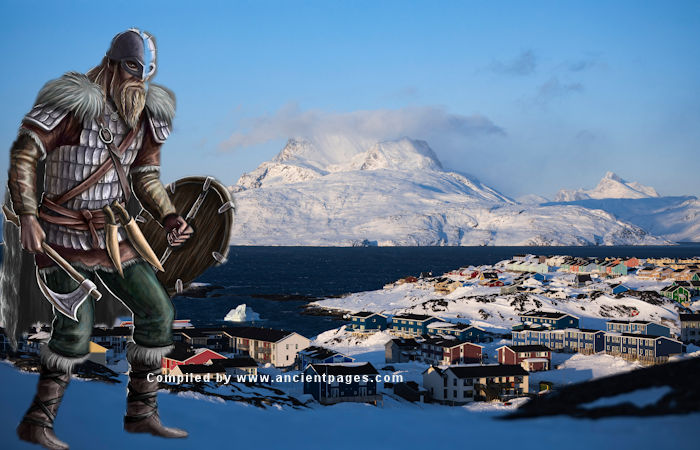How Greenland Got The ‘Wrong’ Name Thanks To Viking Erik The Red
Ellen Lloyd - AncientPages.com - Greenland is beautiful, but the massive island is not very green.
Located between the Arctic and Atlantic Oceans, east of the Canadian Arctic Archipelago, Greenland is mostly covered with ice.
The island was named after the Viking Erik the Red, who colonized Greenland. He had a good reason to call the island Greenland.
Greenland is the world's largest island. It is famous for its colossal icebergs, magical midnight sun, amazing displays of the Northern Lights, and beautiful fauna and flora. Ice sheets cover about 84% of Greenland's landmass. However, Southern Greenland lives up to its name as it is truly a green land.
Greenland is famous for its huge icebergs. Credit: EHRENBERG Kommunikation - CC BY-SA 2.0
Temperatures vary enormously, depending on the location and time of year. One can expect an average temperature in Upernavik of minus 20 degrees in February to about 10 degrees in the towns throughout the summer.
Owing to the low humidity in Greenland, summer temperatures will often feel warmer than you might otherwise expect.
Greenland was discovered by the famous Viking Erik the Red. He colonized the island, built a house on a place later called Brattalid, and served as Greenland’s “capital” for many years.
However, the Vikings were not the first people to live in Greenland. The island had been inhabited in prehistoric times by several Paleo-Eskimo cultures.
From around 2500 BC to 800 BC, southern and western Greenland were inhabited by the Saqqaq culture. Around 800 BC, the Saqqaq culture disappeared, and the Early Dorset culture emerged in western Greenland and the Independence II culture in northern Greenland.
Erik the red changed the history of this beautiful island. The harsh climate on Greenland made life difficult, but Erik the Red was determined and convinced that he could set up a colony.
He started recruiting settlers, but he knew that it would be very difficult to convince Vikings to settle in such a remote and cold place. So, Erik, the Red, cheated and told a lie to attract settlers.
He called the island Greenland and said there were plenty of good fishing reservoirs.
Beautiful Northern Lights over Greenland. Image credit: Mads Pihl, Visit Greenland, CC BY-NC-SA 4.0
More than five hundred Icelanders agreed to follow him to Greenland, but it was a very dangerous trip, and many died on the way. Only 14 of 25 Viking ships crossed the ice-cold and dangerous waters.
The survivors established several colonies across Greenland and lived as fishermen, hunters, and farmers. The Viking settlers shared the island with the late Dorset culture inhabitants who occupied the northern and western parts and later with the Thule culture that entered from the north.
Erik the Red had achieved his goal and never left Greenland again!
The name of the country in Greenlandic (Kalaallisut) is Kalaallit Nunaat which translates as "land of the Kalaallit").
The Kalaallit are the indigenous Greenlandic Inuit people who inhabit the country's western region.
Updated on January 1, 2023
Written by - Ellen Lloyd AncientPages.com
Copyright © AncientPages.com All rights reserved. This material may not be published, broadcast, rewritten or redistributed in whole or part without the express written permission of AncientPages.com
Expand for referencesMore From Ancient Pages
-
 Small House With Beautiful Mythical Frescoes Discovered In Pompeii
Archaeology | Nov 4, 2024
Small House With Beautiful Mythical Frescoes Discovered In Pompeii
Archaeology | Nov 4, 2024 -
 The Untold Story Of The Great Sphinx – Puzzling Discoveries – Part 2
Ancient Mysteries | Aug 13, 2019
The Untold Story Of The Great Sphinx – Puzzling Discoveries – Part 2
Ancient Mysteries | Aug 13, 2019 -
 Dangerous Anomaly Inside Mysterious European Mountain Remains Unexplained – Unusual Ancient Connections – Part 1
Ancient Mysteries | Mar 13, 2021
Dangerous Anomaly Inside Mysterious European Mountain Remains Unexplained – Unusual Ancient Connections – Part 1
Ancient Mysteries | Mar 13, 2021 -
 Unique Canterbury Roll – Ancient Manuscript Reveals Its Secrets About History Of England
Archaeology | Jan 5, 2018
Unique Canterbury Roll – Ancient Manuscript Reveals Its Secrets About History Of England
Archaeology | Jan 5, 2018 -
 Cyrus The Great Cylinder – Legacy Of The Ancients
Artifacts | Aug 25, 2015
Cyrus The Great Cylinder – Legacy Of The Ancients
Artifacts | Aug 25, 2015 -
 Chinese Writing System – Increasingly Complex Over The Course Of Its 3000-Year History
Linguistic Discoveries | Nov 23, 2022
Chinese Writing System – Increasingly Complex Over The Course Of Its 3000-Year History
Linguistic Discoveries | Nov 23, 2022 -
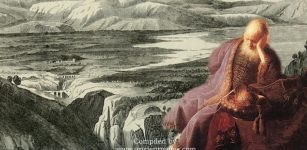 Tahpanhes – Biblical City Where Prophet Jeremiah And King Zedekiah’s Daughters Hid From The Babylonians
Biblical Mysteries | Jul 19, 2021
Tahpanhes – Biblical City Where Prophet Jeremiah And King Zedekiah’s Daughters Hid From The Babylonians
Biblical Mysteries | Jul 19, 2021 -
 DNA Reveals The History Of Modern And Archaic Humans Is Much Longer And More Complicated Than Previously Thought
DNA | Jan 2, 2025
DNA Reveals The History Of Modern And Archaic Humans Is Much Longer And More Complicated Than Previously Thought
DNA | Jan 2, 2025 -
 Mysterious High-Energy Particles Detected In Antarctica – Evidence Of Ancient Nuclear Technology Or Something More Frightening?
Ancient Mysteries | Sep 11, 2019
Mysterious High-Energy Particles Detected In Antarctica – Evidence Of Ancient Nuclear Technology Or Something More Frightening?
Ancient Mysteries | Sep 11, 2019 -
 Long-Lost Burial Site Of Viking King Harald Bluetooth Discovered By Satellites?
Archaeology | Jun 29, 2022
Long-Lost Burial Site Of Viking King Harald Bluetooth Discovered By Satellites?
Archaeology | Jun 29, 2022 -
 10 Ancient Chinese Musical Instruments You Didn’t Know About
Featured Stories | Jan 20, 2016
10 Ancient Chinese Musical Instruments You Didn’t Know About
Featured Stories | Jan 20, 2016 -
 Frey – Handsome Vanir God Of Fertility And Lord Of The Elves In Norse Beliefs
Featured Stories | Mar 3, 2018
Frey – Handsome Vanir God Of Fertility And Lord Of The Elves In Norse Beliefs
Featured Stories | Mar 3, 2018 -
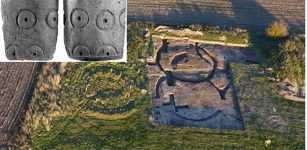 Dazzling Time Capsule Of Unique Iron Age Artifacts And Celtic Roundhouses Discovered In England
Archaeology | Mar 15, 2022
Dazzling Time Capsule Of Unique Iron Age Artifacts And Celtic Roundhouses Discovered In England
Archaeology | Mar 15, 2022 -
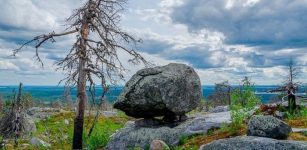 Ancient Secrets Of Karelia: Mysterious Vottovaara Mountain Was Sacred To The Sami People
Featured Stories | Apr 5, 2017
Ancient Secrets Of Karelia: Mysterious Vottovaara Mountain Was Sacred To The Sami People
Featured Stories | Apr 5, 2017 -
 Understanding The Green Sahara’s Collapse
Earth Changes | Aug 22, 2024
Understanding The Green Sahara’s Collapse
Earth Changes | Aug 22, 2024 -
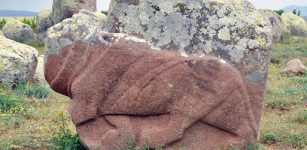 Mystery Of Gigantic Lion Sculptures Dated To The Hittite Era
Archaeology | Apr 14, 2016
Mystery Of Gigantic Lion Sculptures Dated To The Hittite Era
Archaeology | Apr 14, 2016 -
 On This Day In History: George Plantagenet Privately Executed At The Tower Of London – On Feb 18, 1478
News | Feb 18, 2017
On This Day In History: George Plantagenet Privately Executed At The Tower Of London – On Feb 18, 1478
News | Feb 18, 2017 -
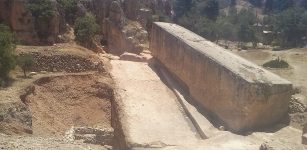 Gigantic Horizontally Lying Stones Of Ancient City Of Baalbek
Civilizations | Mar 10, 2017
Gigantic Horizontally Lying Stones Of Ancient City Of Baalbek
Civilizations | Mar 10, 2017 -
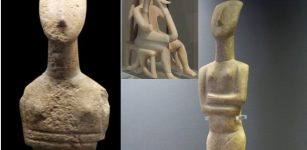 The Cyclades And Their Advanced And Mysterious Society Lost In Time
Featured Stories | Apr 25, 2022
The Cyclades And Their Advanced And Mysterious Society Lost In Time
Featured Stories | Apr 25, 2022 -
 Incredibly Rare Iron Age Wooden Objects Discovered In 2,000-Year-Old Waterlogged Site In The UK
Archaeology | Jan 21, 2023
Incredibly Rare Iron Age Wooden Objects Discovered In 2,000-Year-Old Waterlogged Site In The UK
Archaeology | Jan 21, 2023

